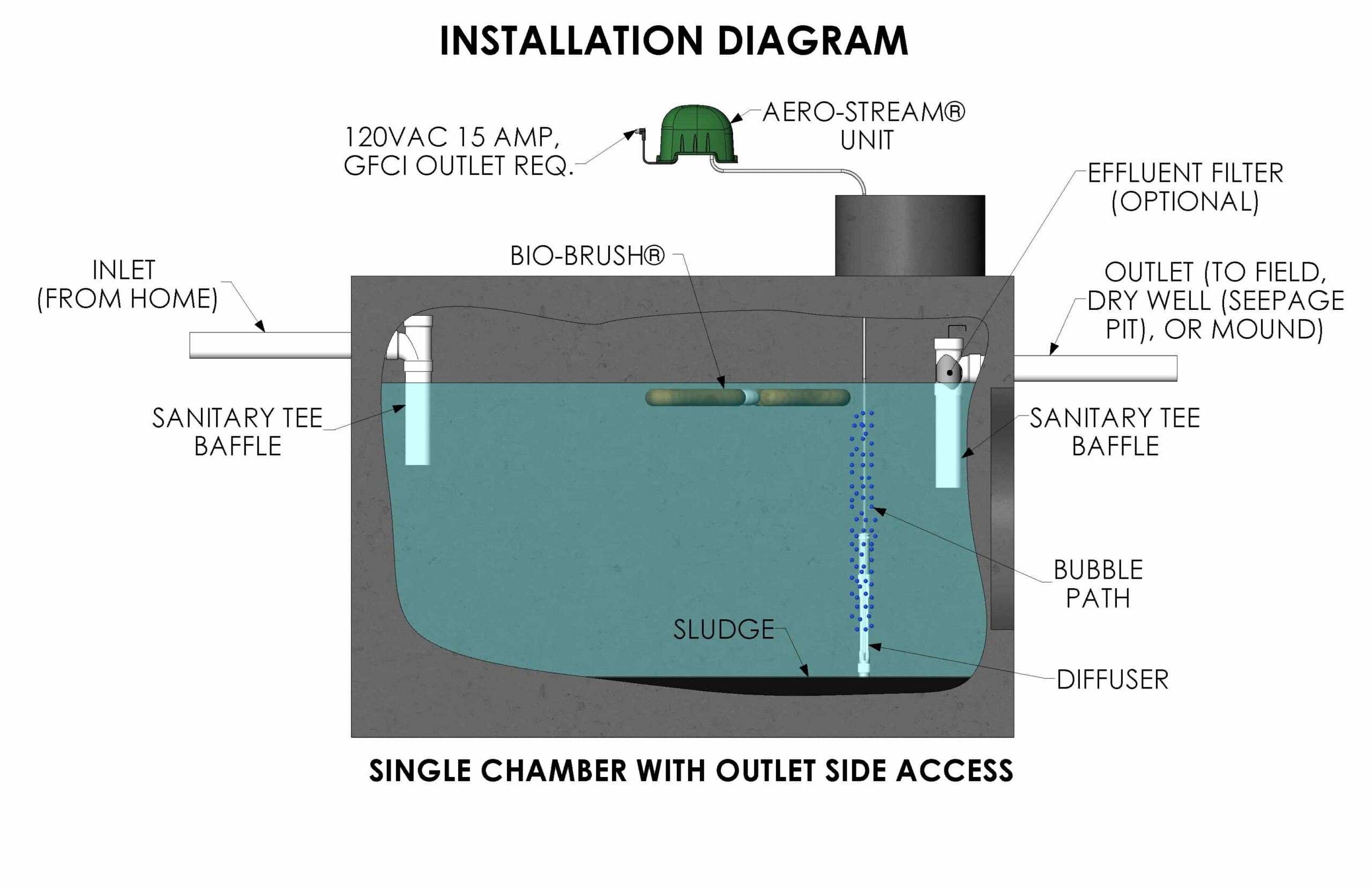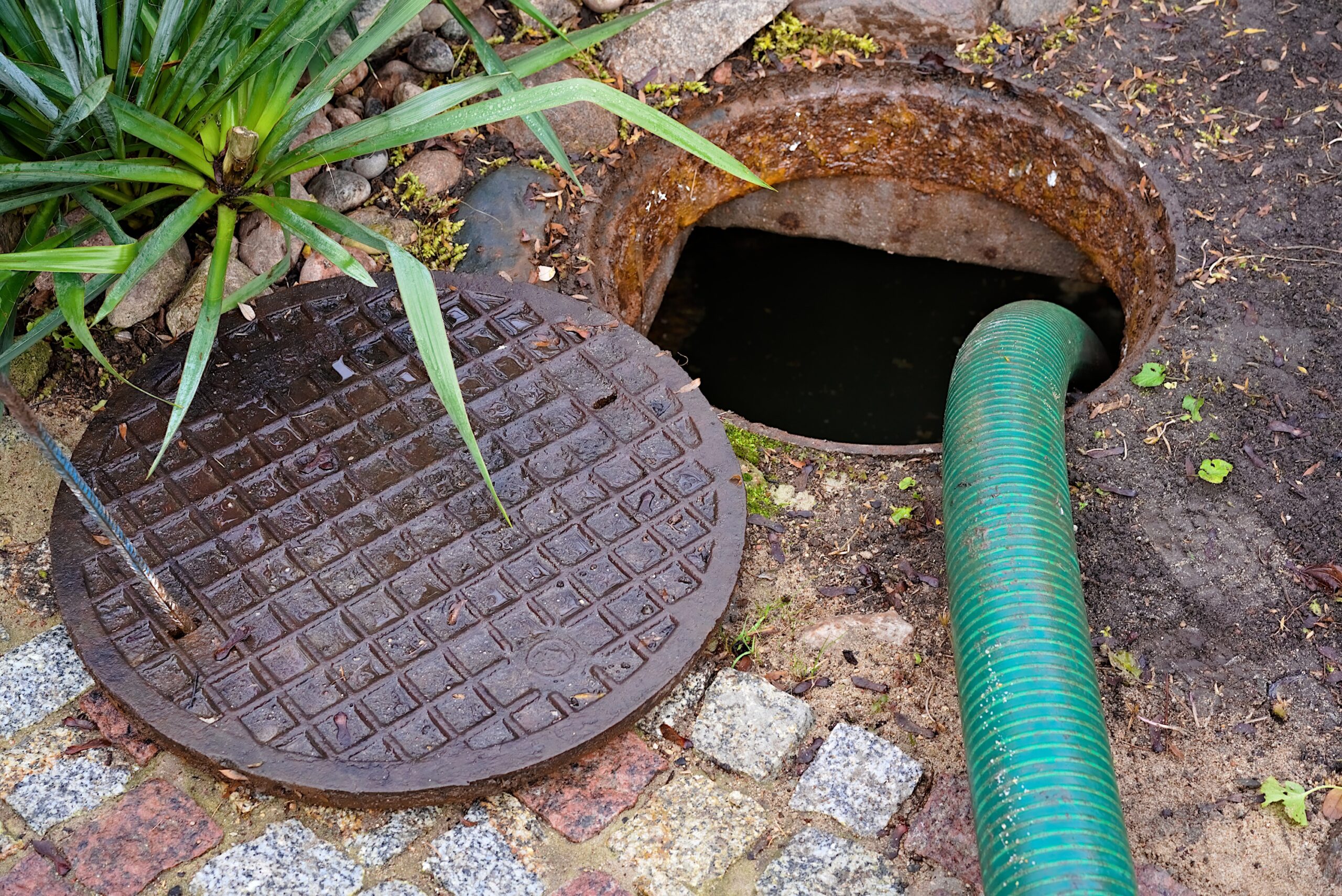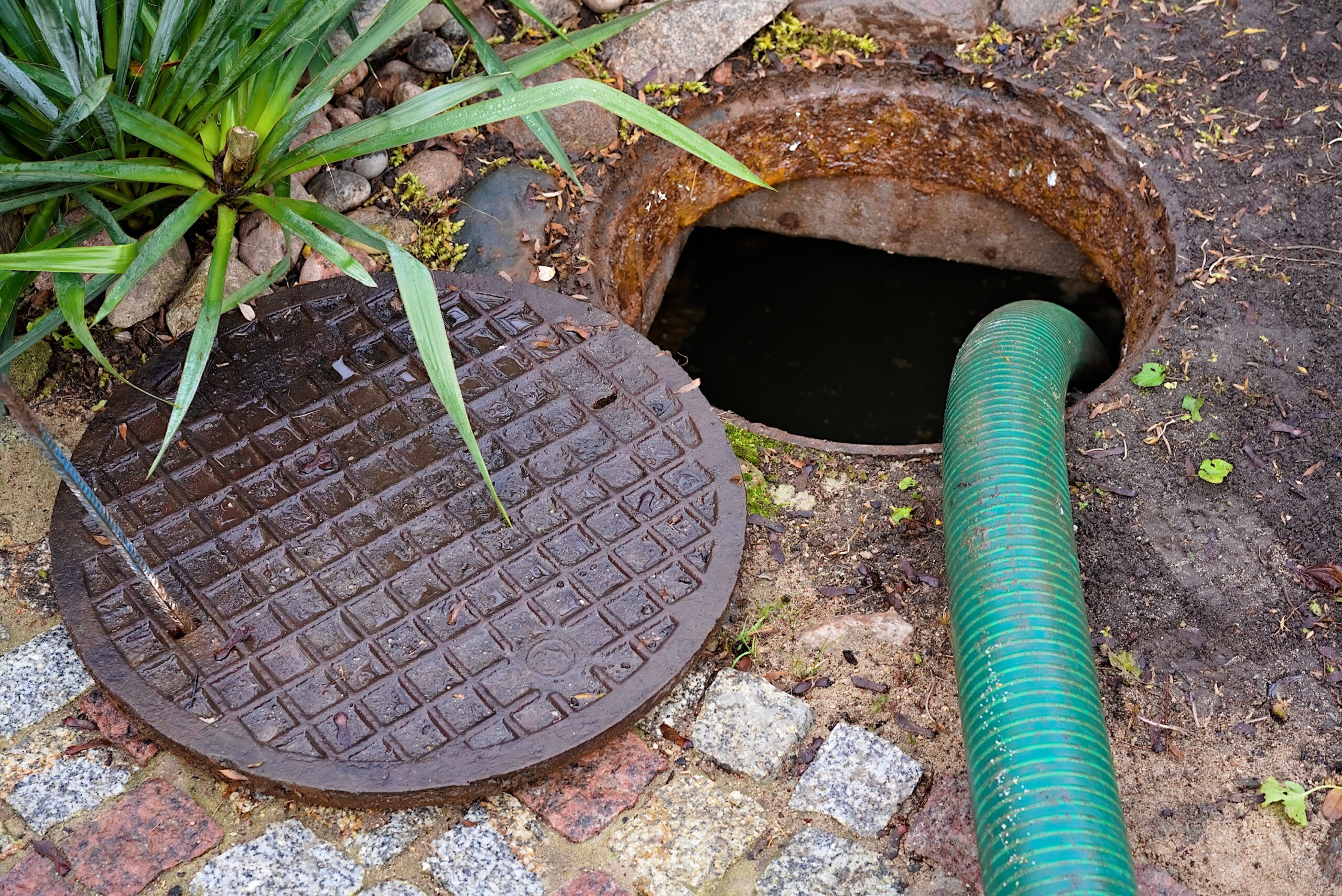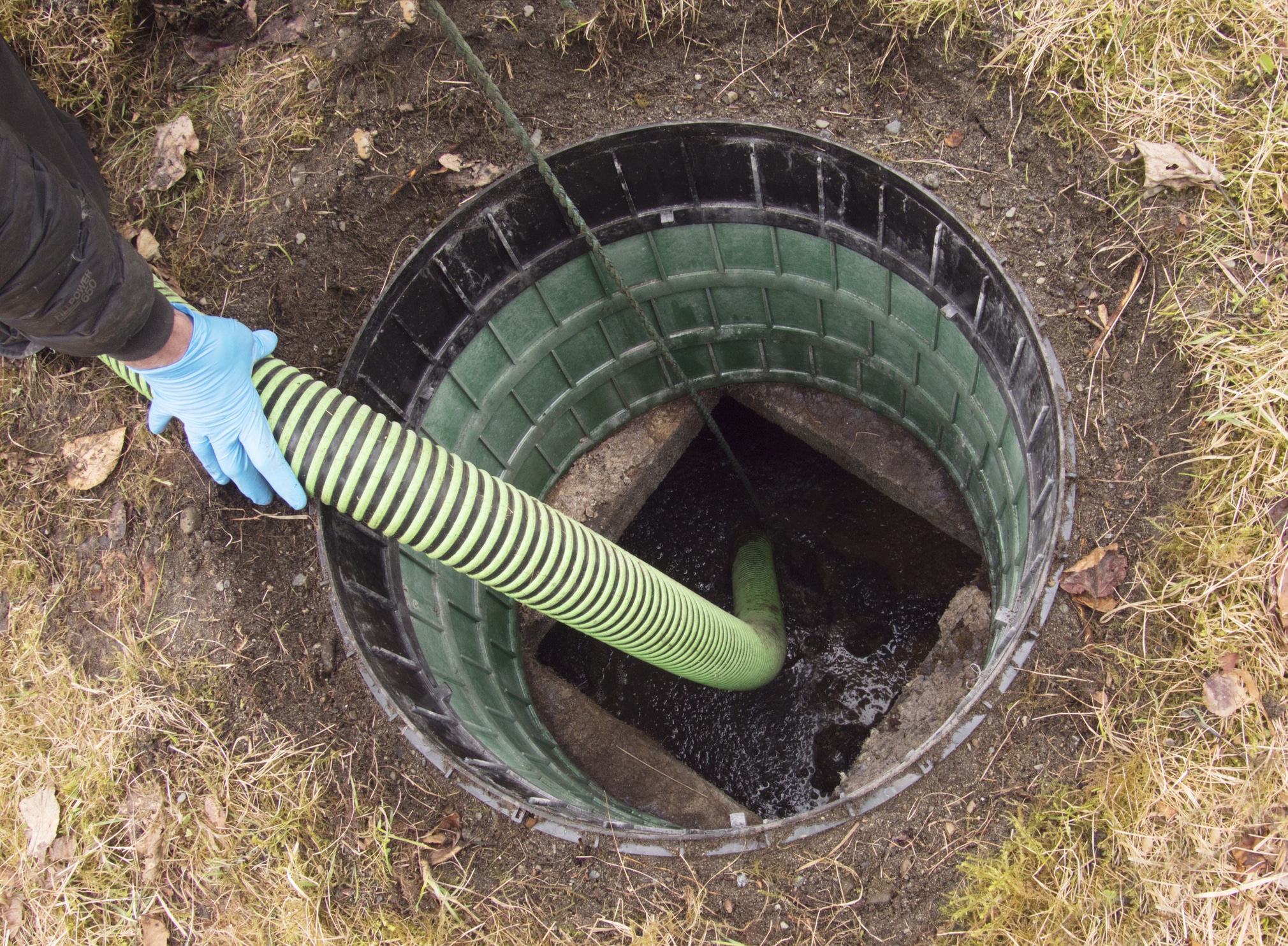How does one benefit from installing a septic tank riser? Consider the following scenarios if a septic tank riser has not been installed on the septic tank:
- Your septic tank has to be pumped. What will the pumper do to get access to the septic tank? They will have to dig up the sod and soil covering the tank to get to the access opening.
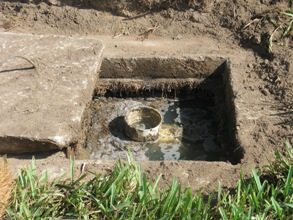 Hopefully, they have some type of idea where the opening is so that the damage to the lawn is minimized. While the pumping (or other maintenance activity) is in progress, care has to be taken to prevent soil or other debris from falling into the tank. After pumping, the access port is covered with soil and, if it is salvageable, the sod is replaced or the area is reseeded.
Hopefully, they have some type of idea where the opening is so that the damage to the lawn is minimized. While the pumping (or other maintenance activity) is in progress, care has to be taken to prevent soil or other debris from falling into the tank. After pumping, the access port is covered with soil and, if it is salvageable, the sod is replaced or the area is reseeded. - You think there might be a clog in your septic tank’s outlet baffle or pipe. All you want to do is take a look at it. Who knows, you might be able to fix it yourself and avoid the expense of calling a professional. You know the tank has an access port, but where is it? Do you just start digging until you find it? That seems like a lot of work.
- You are experiencing slow flowing drains but you just had the tank pumped? Could it be full already? It sure would be nice just to have a look and see what is going on down there.
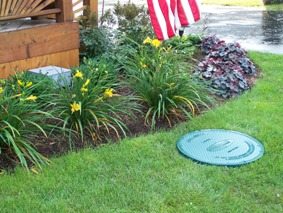 All of these situations would be far easier to deal with if all the homeowner or pumper had to do was to remove the access cover attached to the septic tank riser at ground level. It makes all of the routine maintenance and troubleshooting tasks associated with septic tanks easier to execute. Why wouldn’t a homeowner want this accessory installed on their septic tank if it didn’t have one?
All of these situations would be far easier to deal with if all the homeowner or pumper had to do was to remove the access cover attached to the septic tank riser at ground level. It makes all of the routine maintenance and troubleshooting tasks associated with septic tanks easier to execute. Why wouldn’t a homeowner want this accessory installed on their septic tank if it didn’t have one?
Fortunately, retrofitting tanks with septic tank risers is easy to do.
There are several septic tank riser options available to homeowners. The materials they are made of range from concrete to polymers. Concrete risers are durable as long as they do not succumb to the corrosive effects of hydrogen sulfide/sulfuric acid gas that is a byproduct of anaerobic septic systems. They are, however, heavy and difficult to handle and modify during installation.
Risers constructed out of polymers, however, are lightweight and resistant to corrosive gases. They are easy to handle during installation and usually can be modified so that the cover can be placed on the top of the riser at ground level. It will be out of sight but easy to access when the time arises.

